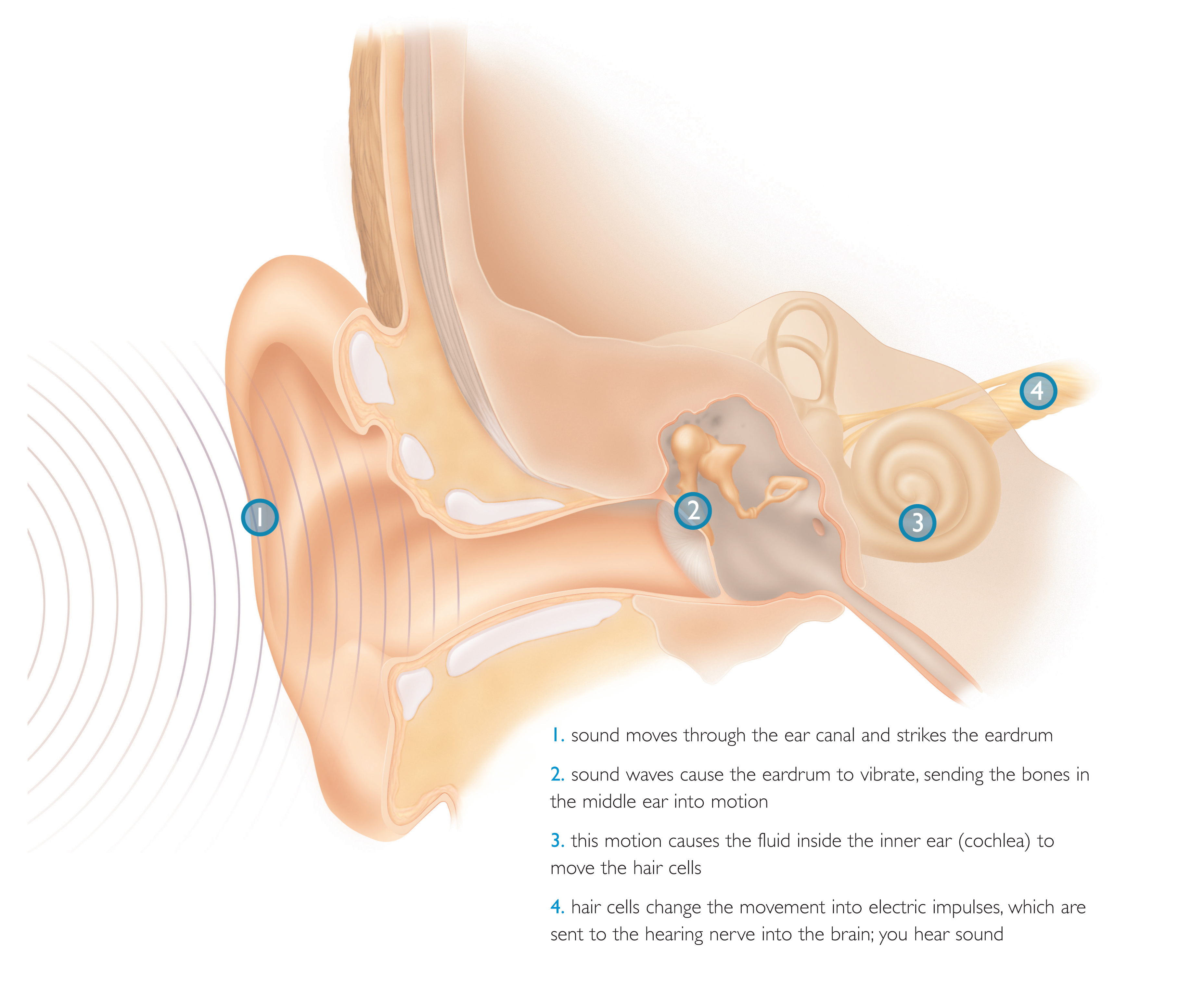Sounds from the environment are directed towards the outer ear (pinna and ear canal) and then begin to vibrate the ear drum (tympanic membrane). When the tympanic membrane vibrates the malleus (hammer) attached to the tympanic membrane begins to move. The malleus is attached to the incus (anvil) which is then attached to the stapes (stirrup). Once the malleus begins to vibrate so too do the incus and stapes. The malleus, incus and stapes make up the ossicular chain. The stapes, because it is attached to the round window, moves the round window in and out, which begins to move the fluid within the cochlea. Movement of the fluid begins to excite the tiny hair cells in the cochlea and this activity sends neural impulses to the auditory nerve. Once neural impulses reach the auditory nerve they are sent along the neural auditory pathyway to the brain. The brain interprets this activity as meaningful sounds that can be used for communication purposes. The following diagram provides more specific information.
